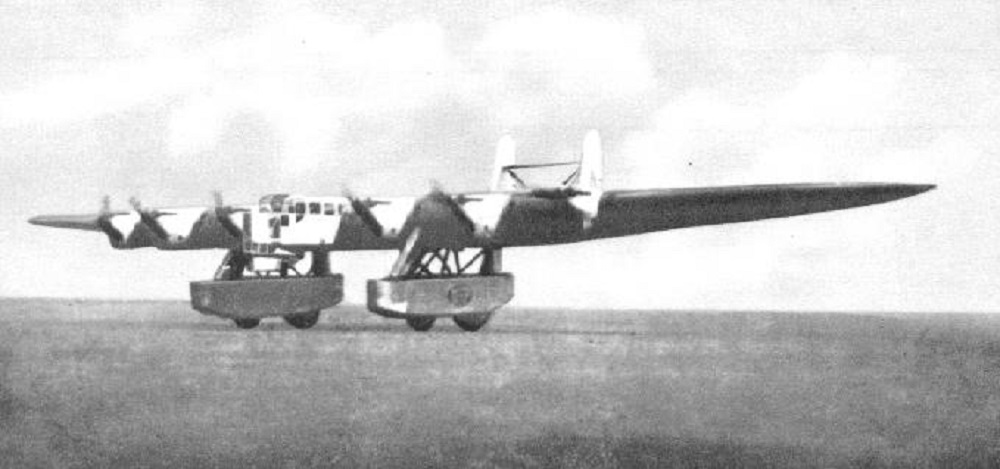Twin-boom aircraft are something of an unknown quantity in contemporary aviation. However, this striking design was more common in the early to mid-twentieth century. In fact, one of the largest aircraft constructed before the ‘jet age’ featured this characteristic structure. This was a Soviet experimental aircraft constructed in the early 1930s, known as the Kalinin K-7.

Design and specifications
Sporting a twin-boom fuselage and conspicuous underwing pods, Konstantin Kalinin designed the K-7 experimental aircraft in the early 1930s. Construction on the first (and only) example began in Kharkiv in 1931. Today, this location represents Ukraine‘s second-largest city. The construction process took two years, and the Kalinin K-7 eventually first flew in August 1933.
Alongside its twin-boom structure, War History Online also reports that the K-7 boasted a conspicuously large wingspan of 53 meters. This was almost twice the length of the aircraft (28 meters). These wings were 2.3 meters thick and had a surface area which outranks that of the Boeing B-52 Stratofortress (454 vs. 370 square meters).
The K-7’s height measured 12.4 meters. Six wing-mounted Mikulin AM-34F V-12 propeller engines provided the majority of the aircraft’s power. Each of these could deliver up to 750 horsepower. A seventh ‘pusher’ engine was located at the rear of the aircraft. The resultant performance figures for the K-7 were as follows:
- Speed – 225 km/h / 140 mph
- Service ceiling – 4,000 meters / 13,000 feet
- Empty weight – 24,400 kg
- Loaded weight – 38,000 kg
Stay informed: Sign up for our daily aviation news digest.

Operational versatility
Kalinin designed the K-7 to be a versatile aircraft that could suit a number of purposes. Primarily, it had a military function, with the underwing landing gear pods also housing machine gun turrets. According to migflug.com, it could also carry 9.6 tons of bombs in this configuration. For such missions, the aircraft required 11 crew members.
However, the K-7 could also be configured for use in civilian/troop transport missions. Using seats located in its aforementioned 2.3-meter thick wings, it could carry 120 civilians or 112 paratroopers alongside its 11 crew members. This also left space for seven tons of cargo, such as mail.
A short-lived design
Avgeeks today continue to be fascinated by the majesty of larger aircraft. Indeed, the heaviest aircraft ever built, the Antonov An-225 ‘Mriya,’ is also a Ukrainian design. However, aesthetic appeal does not always translate to commercial success. For example, we have recently seen this with the demise of the Airbus A380. Unfortunately, this was also the case for the Kalinin K-7.
Between August and November 1933, the K-7 made just seven test flights. The last of these, on November 21st, ended abruptly when a structural failure in one of its two booms caused the aircraft to crash. 14 crew members died in the accident, as well as one person on the ground.
There has since been extensive speculation regarding the potential of sabotage regarding the aircraft’s crash. While two further prototypes were ordered, they were never finished. The Soviet Union ultimately canceled the project in 1935, before these new aircraft could reach completion.

The K-7’s designer, Konstantin Kalinin, had been a First World War pilot before he became an aircraft designer. While only one example of the K-7 was produced, his smaller designs were more successful. 39 of his K-4 were built, as well as 260 of the larger K-5. However, according to Bill Yenne’s The Worst Aircraft Ever, Kalinin was executed aged just 51 in the Stalinist purges of 1938.
Nonetheless, to have constructed an aircraft capable of carrying 120 passengers just 30 years after the Wright brothers’ first flight remains an impressive feat, perhaps regardless of the type’s ultimate failure.
[ad_2]
Source link


